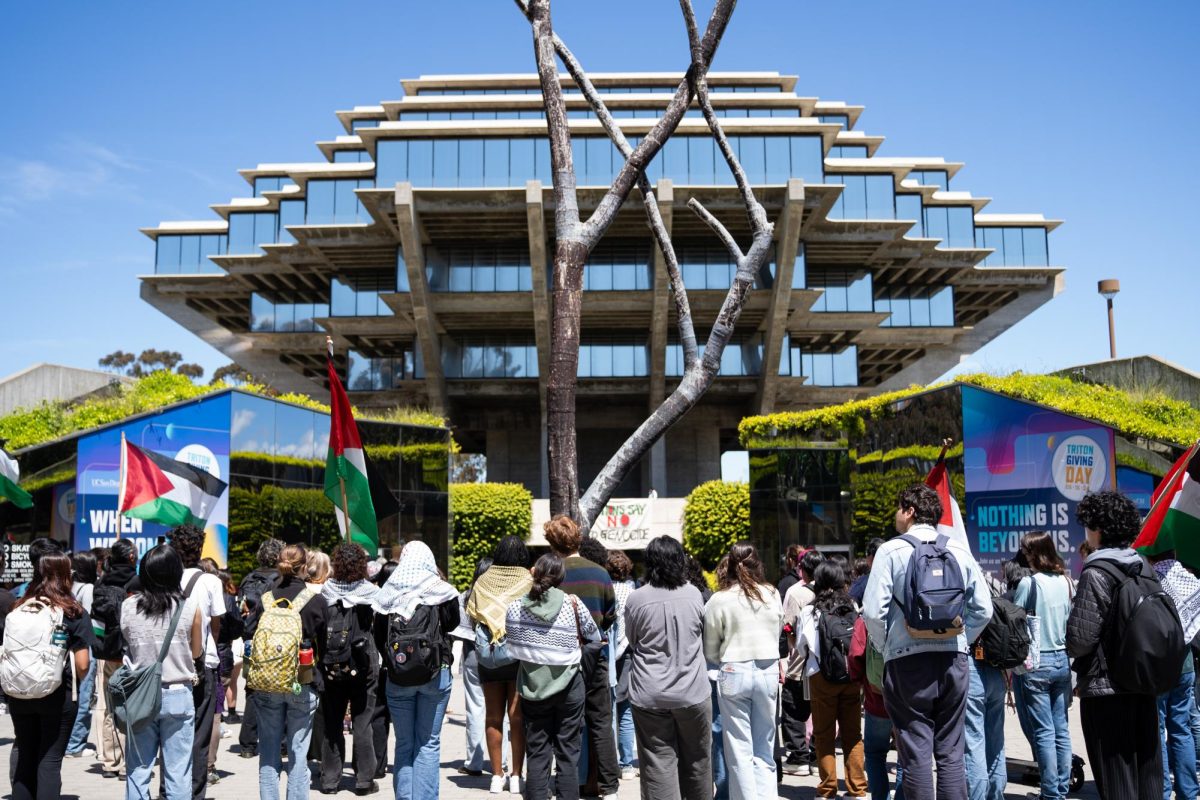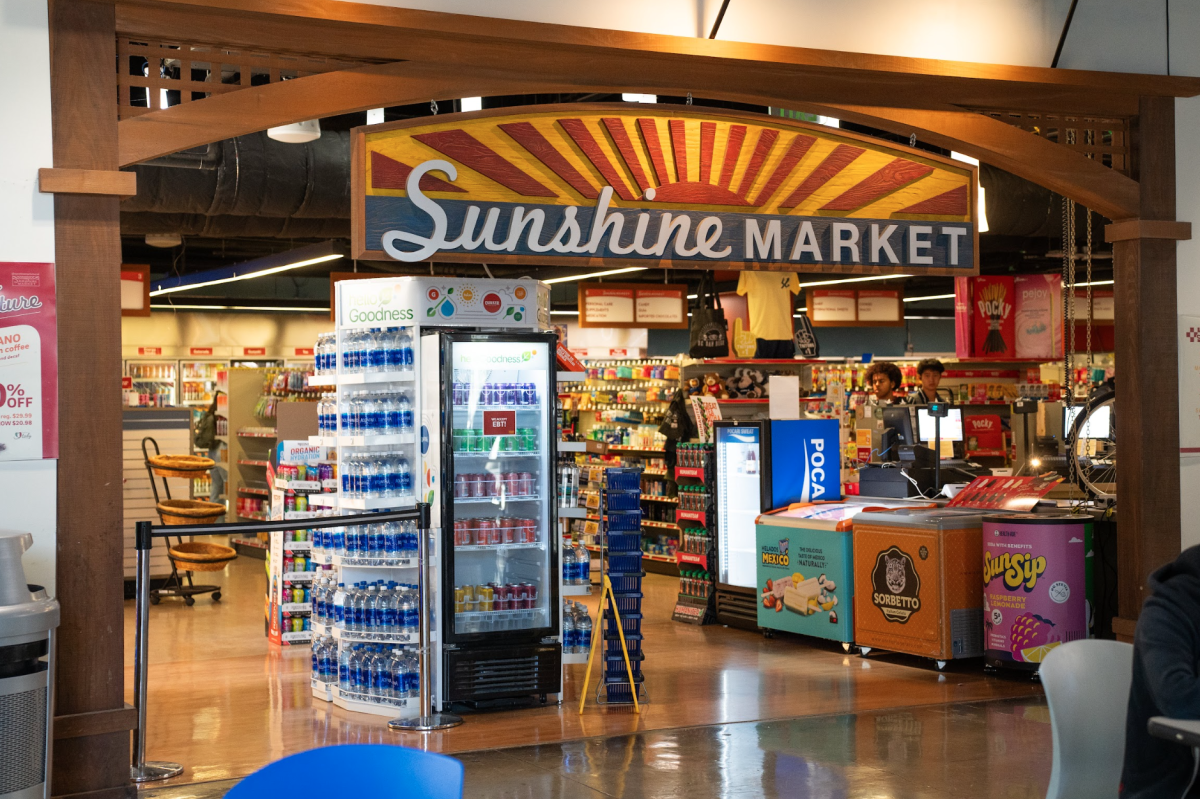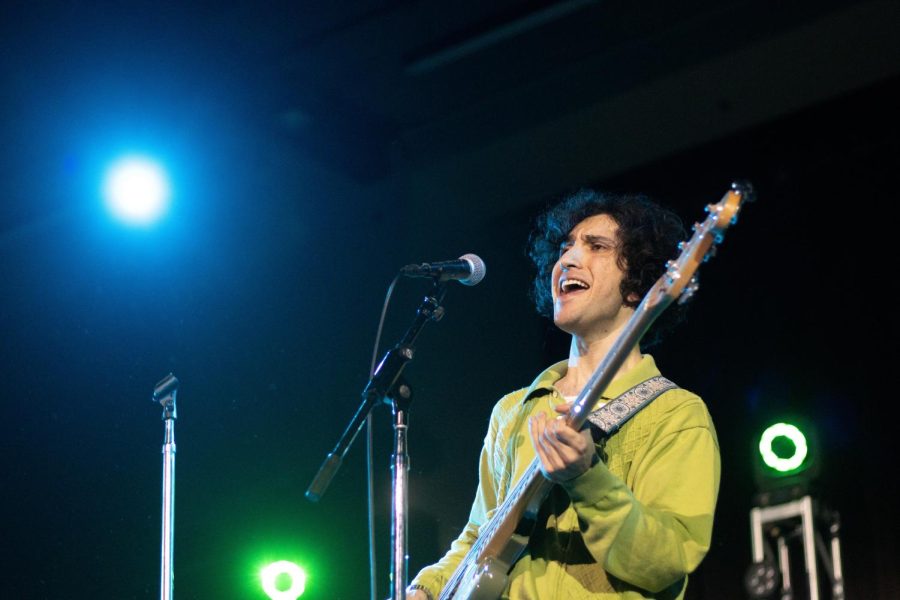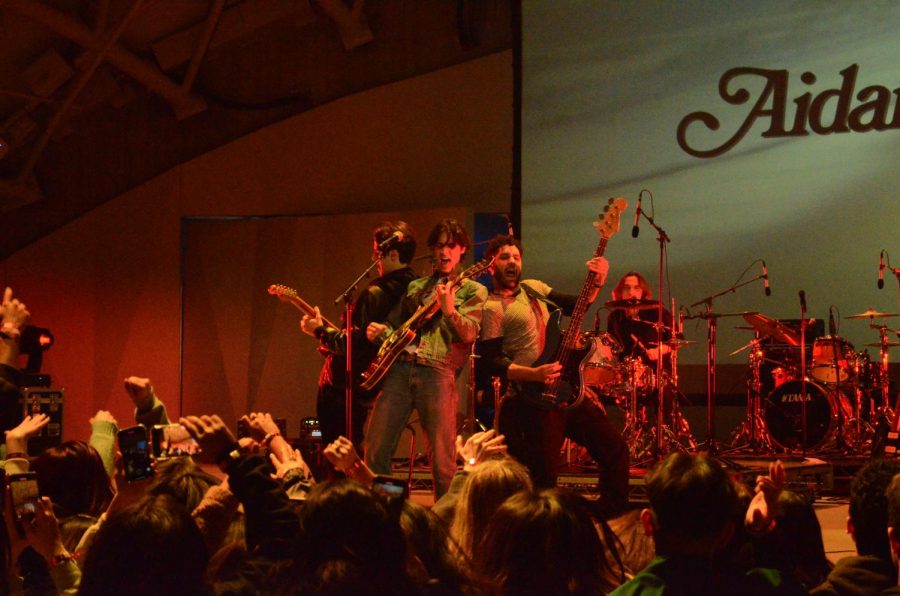Guardian Editorial Board: How has the transition for you
been?
Vice Chancellor of Student Affairs Penny Rue: It’s really
been exciting. It’s really a challenge.
The best thing that I can liken it to, that college students can relate
to, is the transition when you first come to college. When, all of a sudden,
everything in your life is new: new phone numbers, new streets to learn, whole
new sets of friends. You lose all of your grounding but on the other hand, it’s
more exciting — the promise, the possibilities and all of that.
So it’s been very exciting for me. There are obviously
plenty of challenges as you would expect from a job of this magnitude. But I
have made my priority be getting to know people and creating relationships
because that’s what student affairs is, that’s what leadership is. I really felt like I needed to get myself out
there. That goes for students, staff,
faculty, alumni. I think it’s very
common in higher education that you turn upper administrators into objects
because they seem remote. That creates distance when what you really need to do
is have trust and respect to get the work done.
What I’ve tried to do is be as approachable and accessible
as possible, because all of the work in student affairs is done through
consensus, people coming together. There might be a rare occasion where I have
to make a decision and impose it on others. I have really enjoyed
Diego
from the East Coast, East coasters tend to think of
as
very fashion conscious, very concerned with status and image and all of that.
But
from that. I’ve appreciated the genuineness, the friendliness, the openness —
and of course the climate.
Guardian: What were some of the biggest challenges for you?
Rue: One of the most interesting challenges for me was the
fact that I have never supervised admissions before, and that’s probably the
most mission critical aspect of student affairs. If we don’t admit a great
class, we don’t have a university.
Guardian: And this year’s statistics, which saw a drop in
black admissions but rise in Latino admissions?
Rue: The numbers are so small that it’s hard to call it a
trend. We’re pleased with the upper trend in Latinos. We’ve already pored over
the numbers and realized there were a couple of important aspects. One of the
biggest challenges is the issue of scholarships. UCLA and Berkeley are able to
give a lot more financial aid. They have $100 million and $375 million,
respectively, in financial aid endowments.
Of course, we’re younger, we’re smaller, so that’s a growing
issue. UCLA has particularly done some things in that areas that we’ll try to
learn from, and UC Santa Barbara has done some interesting things that are
community-based.
Guardian: Does the problem lie in fundraising?
Rue: It’s partly fundraising for scholarships. Also, the
African-American students that don’t come here, the top five schools they do go
to are Berkeley, UCLA, USC, Stanford and Harvard. They’re fabulous schools, but
I’m sure scholarships have a lot to do with it, especially for private schools.
But we know we need to do more; one of the data points tells
us that if prospective students can visit the campus, it increases their
chances of accepting admissions. The campus has an image of being remote,
because it’s not embedded in the city. But once students come here they realize
it’s friendly. But it will continue to be a challenge. We’re exciting with the
work being done by students with student-initiated outreach. We’ll also be
working with the faculty’s Committee on Admissions to look at what needs to be
tweaked. We’ve had successes and setbacks in that area.
Guardian: One of your foremost focuses this year was
on-campus mental health. What has the progress of that issue been?
Rue: We have a really excellent program in
Marshall
with the
pilot program. We saw good results and reductions in student stress from that
project. We also were a part of the Administration of American College Health
Association’s National College Health Assessment, so we have really good data
now about prevalence of mental-health issues and concerns. It helps us make a
case for resources and planning.
We have some interesting conversations going with the
Their primary-care family medicine physicians are interested in what they call
integrative medicine, which is more preventive in nature. We’re involved in
conversations with them.
In the long run, we’re looking to build a
recreation leaders, mental-health folks, health advocates and stress managers
to destigmatize health-seeking behavior and create a culture of wellness.
This also comes back to fundraising issues, but we are
expecting an increase in mental-health funding from the UC Office of the
President. When we look at mental health, we look at three tiers: the first is
direct treatment and service for individuals that identify themselves as
needing help; the second tier is targeted outreach and prevention activities
for people that are more prone to stress; the third tier contains things that
develop a sense of community so that people feel connected and don’t get to the
end of their rope. We’re hoping to work on all three of those dimensions.
Guardian: In talking with students, what have you heard
students say about their relationship to the campus?
Rue: I’ve found that most students want to create or
experience enduring campus traditions. They want to feel like they’re a
long-term part of the UCSD community.
Guardian: What role do you see construction projects like
Price Center East playing in building campus community?
Rue: I think it’s fascinating what architecture can do to
create synergies. If you think about the people that you made friends with in
your freshman year, it was probably the people who lived closest to you. It
works that way in offices too, where you create relationships with the people
you walk past everyday.
So I think having the alumni affairs office right next to
the student organization leaders is just brilliant. It will create
intergenerational collaboration. It will really help us in the long run. I love
the openness of it; it sends a hugely powerful message to somebody that’s new
to campus that’s wondering, “Do I belong here. Is this for me?”
It’s all so inviting, it draws people in. Architectures can
be very powerful for sending the kind of messages we want to about membership
and belonging. The Cross-Cultural Center’s position looking right over the open
area also says so much about messages of inclusion — who belongs and how they
belong. I think it was a visionary architecture.
Guardian: What have you heard students say about their
relationship with
Rue: I find that students really do appreciate the small
community that the college environment offers, particularly while they’re
residents. Obviously, after they move off campus, that bond is destroyed. So I
think there’s a real opportunity there to try to rethink that transition of
what it means when you become a commuter student.
Hopefully, I think it’s true for most students, they’ve
established a set of engagements and relationships that gets them on campus.
Once you get home, what draws you back to campus? It’ll be interesting to see
if the Loft, for example, is going to draw students back. Still,
Diego
little bit in terms of what it has to offer and how accessible it is. I think
Jolla
that are.
Guardian: Does that mean creating more local partnerships?
How would you want to connect to the local community?
Rue: It will be interesting to see what Senior Week tells
us, how popular and successful it is.
With that, we built partnerships with Sea World and partnerships
with the Padres.
Guardian: The state as a whole is hurting for funds. How
much of that damage trickles down to your office?
Rue: We don’t know yet, and I wish I could tell you. The
last thing that the governor did was put the 10-percent cuts on the table, then
pulled the cuts back from the education sector. We still don’t have a concrete
budget yet and we’ll probably enter the school year without a budget, which is
kind of scary. But one of the things we do is review every vacancy to make sure
it’s necessary; you don’t want to bring new staff on and have to let them go.
So we want to justify every position and hire right now.
Guardian: Does it put any pressure on your department’s
advance planning?
Rue: Absolutely, of course it does. It’s interesting how
fast things change. When I first came into this job, this economic forecast
wasn’t in the cards. The university was in a growth mode with new resources, so
it wasn’t my initial goal to come to a place and have to work with fiscal
constraints — but that’s the current reality.
Guardian: What were your impressions of the new format of
the Sun God Festival? As this is your first festival, how do you plan on
dealing with complaints and protests that have mainly been over the new
festival’s relation to previous festivals?
Rue: Of course, I don’t have any basis of comparison; I
don’t know the old Sun God. I’ve heard people talking about. It’s one of those
things you tend to look at with rose-colored glasses. It’s really not my role
and responsibility to lay judgment on the event.
What I need to do is make sure that the students that are
the planners of it have the support they need from the college. I thought it
was a very well-run event this year. When you see that many people in one place
having a good time, it’s pretty inspiring.
That venue did not work as well for the daytime activities.
In that sense, it was too big; you had 1,000 people there, but the field holds
20,000 so it looks like no one is there. I got there at around 4:30 p.m. to
[the Midway] where they had student performances. And I saw that people loved
those because they were exciting, but it was a relatively small reach. Those
are some things I think should be worked on, but they are very doable.
Guardian: Do you see this year’s form of Sun God as one of
those “enduring traditions” you mentioned?
Rue: If that’s what the students want, I’m in favor of that.
I don’t plan student programs for a reason; I didn’t know any of those bands or
any of the music. I don’t like that music. But none of it is really up to me. I
don’t like music that loud. [laughs]
Guardian: What kind of support did you offer programmers
this year?
Rue: What I was most involved in was the creation of our own
detox center in the Rec Gym. Usually, students that are not hospital-worthy or
jail-worthy go to detox downtown.
What students tell us is that it’s a sketchy area. They’d
get down there, sleep it off with no cell phone or purse. The police would tell
us the time to take students down there and come back was time away from their
ability to help on campus. We wondered if we could create a partnership there
that would enable us to make sure students were safer and cared for on a
campus-based environment that would support our police, who had a very
difficult job to do that day. It proved to be very successful.







